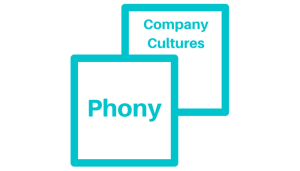Mary E. Marshall's Blog, page 31
April 13, 2016
Phony Company Cultures
 You hear a lot these days about the wild company cultures and perks of some of the tech start-ups – some true and some not so true. The trend has been to create work environments that felt more like home so people would stay longer and work more hours. Although some of the workforce may think these are great perks and that the company cares about them, be clear, this is mostly self-interest on behalf of the organization.
You hear a lot these days about the wild company cultures and perks of some of the tech start-ups – some true and some not so true. The trend has been to create work environments that felt more like home so people would stay longer and work more hours. Although some of the workforce may think these are great perks and that the company cares about them, be clear, this is mostly self-interest on behalf of the organization.
I read an article in the NY Times this weekend about Hubspot and I just had to laugh because it has taken what I consider “phony” culture to the absurd. The author describes how team members are let go with a “congratulations you’ve been fired” email and a good-bye party.
Has good sense gone out the window? In what world is it okay to celebrate a very bad moment in someone’s life in full view of the rest of the company’s employees? This is the most egregious effort I’ve heard of to try to engage employees in a phony culture that purports to value its team members. The author rightly points out that a lot of today’s tech companies with revolving doors for employees are no better than the sweatshops at the turn of the century. They pay better, so at least there is that, but as far as treating people with respect and dignity? Not so much.
In the case of Hubspot, the Intentional Culture they were supposedly creating was all about the team, being happy, and celebrating people. Where they veered off the highway and onto a gravel road was thinking this applied to all events in an employee’s time at the company. Firings should never be particularly easy, frequent or fun. If hiring was done better, firing would not happen as often. However, as I mentioned a few weeks back, firing is a necessity, but to do it as an event and “congratulate” someone is just cruel.
The culture that Hubspot has unintentionally created is callous and heartless, with very little respect for human dignity. It is still true that employees are usually the biggest asset of an organization, and most of these flamboyant “play time” cultures are set up with that in mind. But in one move, Hubspot negated that and essentially said: “we don’t respect you and not only that, we’re going to pretend this is fun.” This makes it awkward for everyone involved, not the least of which is the poor employee who got sacked.
As I’ve said before, get clear on your values ahead of time and create processes, procedures, and behaviors that are aligned with them. One wrong move and you create an unintentional culture that will stifle creativity, productivity and ultimately profits.
The post Phony Company Cultures appeared first on Mary Marshall // CEO Coach.
April 5, 2016
Turning Around a Negative Business Culture
 Workplace negativity can bring down an entire team. It erodes morale and productivity. The culture quickly follows the downward spiral and becomes “unintentionally negative.” In today’s competitive hiring arena, this becomes a real Achilles’ heal for an employer. The problem is not only the few who are spreading the negativity, it’s the good employees who do not want to be in that environment who will leave as a result. As I discussed last week in my blog “Breaking up is Hard to Do,” you will have to let go of some of the people involved, but for the rest, you quickly need to address the negative business culture that has arisen.
Workplace negativity can bring down an entire team. It erodes morale and productivity. The culture quickly follows the downward spiral and becomes “unintentionally negative.” In today’s competitive hiring arena, this becomes a real Achilles’ heal for an employer. The problem is not only the few who are spreading the negativity, it’s the good employees who do not want to be in that environment who will leave as a result. As I discussed last week in my blog “Breaking up is Hard to Do,” you will have to let go of some of the people involved, but for the rest, you quickly need to address the negative business culture that has arisen.
Not surprisingly, the turnaround starts with leadership. You can’t expect this problem to magically disappear just because you got rid of a few bad apples. There may have been some validity to their complaints and left unaddressed, the wounds will surface again because you didn’t get at the root cause. As a leader, you need to get involved. There was a great piece I came across, “Simple Ways Leaders Can Help to Refocus a Team’s Negative Outlook,” that talked about practical ways to address this situation:
Practice transparent communication – This means stopping all blame, complaining and justification as the team continues a negative outlook. As a leader, it’s up to you to take in the information, decide on a course of action with your team, but avoid using any of the above or you become part of the problem. Often when we listen, we believe we already know the answer and so we aren’t truly listening. We are biding our time until we can provide the solution. In this situation you need to be open to any solution, not the one you “know” is right. Open communication and engaging management will help curb negativity.
Don’t encourage victimhood over personal power – Never pretend you don’t know what is going on. If you have victims, including yourself, you also have rescuers and persecutors (the classic Drama Triangle). You can’t play any of the roles. Take control, ownership and responsibility for a problem, and encourage your people to do the same. It’s about the solution, not who’s to blame for where you are at.
Return the team spirit to the present – We all have long memories, and we go back to how things were handled in the past to predict how they will be handled today. This keeps people stuck in the past and focusing on the “bad things” rather than the present which doesn’t have to be negative. Focus on the present and the future.
Seek out and articulate the positive – Happiness is a choice. Yes, you really can choose to see a situation positively, regardless of how bad it might seem. As a leader, you need to find the positive (not falsely) and talk about it in a way that presents possibilities, not realities that cannot change.
Create opportunities to express gratitude – Leadership is about acknowledging when people do well, recognizing a contribution, however small, will go a long way towards changing a negative culture. Recently, a good friend of mine took another job when a recruiter called because she was tired of never being recognized for her contributions. The company was shocked and will have a difficult time replacing her.
These are just a few of the ways that leaders can turn a negative workplace around. It doesn’t happen overnight and you will have to be very intentional, but it is possible. Leaders go first!
The post Turning Around a Negative Business Culture appeared first on Mary Marshall // CEO Coach.
March 30, 2016
Breaking up Is Hard to Do
 Several of the companies I’ve been working with recently are struggling with underperforming employees. This has reminded me that dealing with this is one of the most difficult areas for leaders, especially when it’s a tough hiring market with low unemployment.
Several of the companies I’ve been working with recently are struggling with underperforming employees. This has reminded me that dealing with this is one of the most difficult areas for leaders, especially when it’s a tough hiring market with low unemployment.
Let’s address a couple of myths. First, there is no “good time” to fire an employee. It’s always difficult for the employer and employee. It’s just one of those things that has to be done for the organization and the person. The right time is when you’ve exhausted all your development efforts to change the behavior of the individual, you’ve followed your disciplinary procedures, (verbal, written, support), and the employee is still not performing.
The second and more common myth is that you can “fix” someone’s behavior. Employees can learn new skills if they have the aptitude and willingness. They will not if they don’t want to. Ever tried to make a three-year-old do something they don’t want to? It never ends well. When an employee has been put on a performance improvement plan (PIP) and during the timeframe has shown a willingness to improve behaviors, then quickly reverts back to the unacceptable behavior after the defined time period ends, you have a problem. Typically, unless you are willing to have a babysitter-style manager for them, you will continue to be frustrated and the employee will continue to underperform.
More often than not, it boils down to an employee being in the wrong position for their skill set or temperament, or their values don’t align with the organization’s. I don’t believe employees come to work every day expecting to underperform, but the combination of the environment and what they bring often leads to less than desirable results for all.
I’ve not met a business leader who likes letting someone go. First, as humans, we don’t like conflict and this is potentially huge conflict. Second, we do have empathy for the person and what this will do to their lives. Recognizing that it’s okay to feel terrible about it and that it’s the right thing to do often causes conflict within the leader, but it’s the way it is. So time to rip the bandage off and get it over with.
Think about the message you send to all the employees performing at or above standard who don’t get nearly the attention the underperformer does. How fair is it to them? I guarantee they are thinking about it and watching what you do. So bite the bullet, let the underperformer go in a short meeting, give them whatever feedback you feel appropriate, but don’t make them feel worse than they already do. Don’t argue or justify and be sure to give them some severance. Remember, it is a person sitting across from you, with hopes and dreams and you want to help them, just not in your company.
The most expensive time in your business is the gap between when you know you have a problem with an employee and when you actually deal with it. Letting someone go so they can find a better fit is a gift to them and to the rest of your workforce.
The post Breaking up Is Hard to Do appeared first on Mary Marshall // CEO Coach.
March 21, 2016
Leaders Must Be Learners
 Every successful leader I have worked with is a learner. They know there is a lot they don’t know and are curious. The challenge is that running a company is a lot of work and there is usually no time for reading or attending classes so most of the learning is “on the job” or the “school of hard knocks.” So why must we always learn through failures and not make time for learning up front? The answer is usually that we’re moving so fast, we think it’s just easier to fix it if we screw up then to take time to investigate up front. Additionally, we get annoyed with the analytical types that have to look at everything five ways to Sunday before making a move. Unfortunately, the consequence of this is we spend so much time cleaning up, instead of moving forward.
Every successful leader I have worked with is a learner. They know there is a lot they don’t know and are curious. The challenge is that running a company is a lot of work and there is usually no time for reading or attending classes so most of the learning is “on the job” or the “school of hard knocks.” So why must we always learn through failures and not make time for learning up front? The answer is usually that we’re moving so fast, we think it’s just easier to fix it if we screw up then to take time to investigate up front. Additionally, we get annoyed with the analytical types that have to look at everything five ways to Sunday before making a move. Unfortunately, the consequence of this is we spend so much time cleaning up, instead of moving forward.
I wrote my book “Putting Together the Entrepreneurial Puzzle,” because every client I had at the time, (including myself), had a stack of unread books on their desk or nightstand. I made it short, just the basics, so it could be read on a plane ride, and still people didn’t make time for it! So what’s the solution for the busy executive? Learning goals. Just as you would identify development goals for your team, you need to identify some for yourself. What’s an area of your business that you need more information on to make better decisions? What’s a new technology that might impact your business? What is the future of your industry? What has your staff repeatedly told you to get better at?
If any of these resonate with you, it’s time to pick a goal. Figure out how you like to learn – articles, books, books on tape, lectures, podcasts, classes, mentors or groups – and identify at least one way per quarter you can learn something new about the area you identified. This means that you will have had 4 formal learning experiences throughout the year to advance your knowledge set. It’s not hard, it doesn’t take a ton of time and you’ll feel good when you accomplish it. The best part is, your employees will see that you take learning seriously and might do so for themselves as well.
I’ll leave you with two quotes, “A leader who stops learning, will not be leading anyone for very long.” – Anonymous and my favorite from Albert Einstein, “You will not be able to solve the problem with the same level of thinking you used to create it!”
The post Leaders Must Be Learners appeared first on Mary Marshall // CEO Coach.
Learning Cultures are Critical
 One of the requirements of the current, younger workforce (Millennial’s, Gen X, Gen Y) is personal education. In other words, what they are saying to employers is “what’s in it for me to stay here?” And what they are looking for is a way to advance their career, their resume, their credentials so that when they leave, they are more marketable than when they came. This also means that they will not be with you for long, 2-3 years is about the amount of their lives they will consider committing to. This is vastly different for those of us over 50 who were told to make a career at a company or at least in the same field. (I have failed at both!)
One of the requirements of the current, younger workforce (Millennial’s, Gen X, Gen Y) is personal education. In other words, what they are saying to employers is “what’s in it for me to stay here?” And what they are looking for is a way to advance their career, their resume, their credentials so that when they leave, they are more marketable than when they came. This also means that they will not be with you for long, 2-3 years is about the amount of their lives they will consider committing to. This is vastly different for those of us over 50 who were told to make a career at a company or at least in the same field. (I have failed at both!)
So how do entrepreneurs accommodate this new reality? It means adopting a learning culture and organization. It’s not about offering a class or two, it’s about establishing it throughout your whole company. An easy way to start is to have a development plan for each employee. This needs to be separate from their annual review form or at the very least, incorporated into it so that it is a living document that doesn’t get filed away, never to be seen again. When a new employee starts, have the manager sit down with them and say, what do you hope to learn or how would you like to grow in the next 2-3 years and how can we help you do that? Don’t e shy about saying, we know that is probably the amount of time we have with you so we want it to be good for us both. Almost like saying, we know we’ll break up so let’s make it good while it lasts!
Identify specific goals they have for advanced learning or skills they wish to acquire and work with them to identify if and how the company can help. Be realistic, this doesn’t mean breaking your budget for training on one person. What it means is coming up with a plan that you can assist with as long as they are employed there, within reason. Every employee should have a unique plan because they will each have different goals and dreams. This is not the “where would you like to be in 5 years” conversation. It’s about helping them, help you and vice versa. Keep it simple, list 3-5 learning goals and how and when you will address each. You don’t need to figure it out for them, figure it out with them. They should have a say in their development and will, in fact, want input. Like most of us, they do not want to be told what you have decided is best for them. Make it a partnership.
There are likely themes that you will run across that all employees will need training on. This is when you would organize a speaker, training or class for everyone to go to. Evaluate all training through the lens of “how it will benefit the company and the employee” and you will quickly see which themes emerge for group training and which are individual in nature. However, all should benefit the company in some way, even if it’s to make the employee feel valued. I would not, however, offer training in a completely unrelated field, just because it was asked for. Think about the criteria you have as an organization prior to discussing anything with the employees. If it’s a partnership, it’s mutually beneficial.
Larger organizations have Chief Learning Officers, however, smaller companies just need each manager to pay attention to the development needs of their direct reports. The CEO needs to pay attention to his or her management teams development needs. The value to the organization will be more productivity, happier and smarter employees!
The post Learning Cultures are Critical appeared first on Mary Marshall // CEO Coach.
March 15, 2016
Horizontal Innovation
 There was a great piece in the Harvard Business Review this month about innovation.
There was a great piece in the Harvard Business Review this month about innovation.
What was interesting about it was their recommended approach was a bit different, or as they described it, “horizontal.” When faced with a complicated problem, or one that had eluded solution, they recommended that we look sideways, not up. Normally, in most organizations we go up the hierarchical chain to ask for help and look for answers. This can be slow and usually looks at the problem in the same way the people who are looking for solutions have already done.
In the article, there are several examples of solutions found by looking horizontally. (I love that the problem they describe with space suits was solved by bra designers at Playtex! Who would’ve thought?) Typically, we look at or are tasked with solving problems that we know something about. We are in our field and we have a level of knowledge or expertise that would suggest we should be able to solve it. Then we hit a wall and can’t get past our own thinking or knowledge that keeps us stuck in a box. Horizontal thinking means going to other departments, other industries, people below and above us in the workplace to get all minds thinking about the problem.
This is why Lean Manufacturing works so well. The entire team is responsible for looking for ways to get rid of waste, not just a single department. Anyone, can look at anything else and offer solutions. By beginning with the premise that anything can and will be improved, they never stop looking for answers and they do it as a team. A truly “lean” company incorporates this practice throughout, not just on the manufacturing floor.
The workforce of today wants to be involved in solving problems, regardless of whether or not it is their department. They don’t do as well with hierarchical structures and horizontal thinking works well for them. They grew up thinking in groups, working on projects in groups, and not necessarily having a higher-up be “the decider.” They learned horizontal thinking and in some ways, they are well-positioned to solve today’s problems with innovative thinking through their “group think” upbringing.
To encourage this within your organization, you’ll need to do two things. First, encourage a culture of collaboration and innovation through involvement of the entire team, not just departments or individuals considered the “experts.” Second, you will have to encourage or teach them to really look outside the box for help – meaning outside the company – to similar and dissimilar organizations, schools, and other public entities to think about the problem differently and ultimately to solve it differently.
Lastly, you’ll need to make it okay to look for solutions in unconventional places. All leaders will need to be tolerant of this and know that it won’t always be successful. However, innovation is never a straight path, so the more paths you are on, the higher the likelihood that you’ll hit on what solves a problem or creates something brand new.
The post Horizontal Innovation appeared first on Mary Marshall // CEO Coach.
March 9, 2016
Always Start with Why
 As I was binge watching House of Cards this weekend I was reminded of a link someone had sent me from Fortune that lists 7 great documentaries every entrepreneur should see that are available on Netflix.
As I was binge watching House of Cards this weekend I was reminded of a link someone had sent me from Fortune that lists 7 great documentaries every entrepreneur should see that are available on Netflix.
I thought I should probably take a look at a couple since what I write about is entrepreneurs and entrepreneurship! These films have some great stories with some great time-tested lessons for entrepreneurs, but the theme throughout that struck me the most was “start with why.” Starting a business can seem like the cool or hip thing to do – be your own boss, make millions, etc. etc. How hard can it be? Right? The reality is that it’s always hard and you will always run into obstacles that will take you down or make you stronger. You just don’t know when they are coming, where they will be, and how they will affect you.
If you look at the most successful entrepreneurs, they know the “why” of starting the business and more importantly, they know the “why” of the product or service they are offering. The first “why” is about why you are even thinking about starting a business in the first place. Some do it because of an inability to get a job, some because they have a dream and want to see it realized, some decide it’s the best way to earn money, some want to provide jobs for others, and some agree to a partnership with a friend, (just to name a few).
None of these reasons are better or worse than others as far as the likelihood of success. The key is being honest about what it is, embracing it and making sure it meets your end goal. The “why” has to feel real to you, be real to you and ring true. If your “why” is made up because you think it will sound good to other people, put your money back in the bank and get a job. Game over. In my book, Putting Together the Entrepreneurial Puzzle, Chapter 10 is about “the exit strategy.” In it, I talk about beginning with the end in mind. If you don’t, the end will be unintentional and most likely not what you wanted. Build to the exit, don’t let the exit door hit you on the way out.
The second “why” that is crucial in a business is the product or service. If you don’t know why this will be important to the customer or partner, they won’t either. As Simon Sinek says, people don’t buy what you do, they buy why you do it. Even if you are clear on the why, if you can’t communicate it well, if your marketing doesn’t capture it, you’ll struggle. Small businesses have to do so many things correctly, right from the start, that a mistake in the “why” in either case can lead to lost money, lost friends, lost reputations, lost family and more.
Take a look at the 7 inspirational stories in the documentaries on Netflix and I’m sure you’ll find an insight or two that you hadn’t thought about for a while, if ever!
The post Always Start with Why appeared first on Mary Marshall // CEO Coach.
March 2, 2016
What Makes Teams Work?
Last week I wrote about the traits of individual team members and how sometimes superstars do not make good teammates and can negatively impact performance. Shortly after that, there was a detailed piece in The New York Times about a research project that Google did on effective teams. It was really fascinating because they were searching for the perfect mix, the right recipe for an effective team. After all, why not find out the secret sauce within their 51,000 member workforce? What they found was not what they expected and I want to point out two key findings in particular.
about the traits of individual team members and how sometimes superstars do not make good teammates and can negatively impact performance. Shortly after that, there was a detailed piece in The New York Times about a research project that Google did on effective teams. It was really fascinating because they were searching for the perfect mix, the right recipe for an effective team. After all, why not find out the secret sauce within their 51,000 member workforce? What they found was not what they expected and I want to point out two key findings in particular.
The first characteristic they found in successful teams was that they had group norms. These are operating principles for the group’s behavior. Mostly spoken, but sometimes not, the key is that the whole group knows what they are. This provides a level of “psychological safety” that all humans need in order to contribute and think about and articulate what they want. Without this, team members will withhold ideas and feelings, sometimes leaving the best ideas and/or cautions out of the discussion. The group norms provide a level of safety or equality for all group members. The best ideas come from these groups.
Having facilitated meetings for many years, I can attest to the fact that when norms or operating principles are established upfront, things go much smoother and progress can occur. I’ve also presented to groups where there were no “rules” and any value or take away is minimized because of the lack of norms. Some call it the group culture, formed on people’s values, but it’s really just more behaviors that are “ok” and those that are not. Some examples are, “Be responsible for what gets heard,” and “Every person’s contribution if valid and valuable.” These are just two that I’ve used for years, (provided by Dwight Frindt at 2130 Partners). They set the framework for productive, safe conversations.
The second characteristic they found of successful teams was that all participants had conversational equality by taking turns and they had “emotional sensitivity” to others points-of-view. Again, creating safety. The researchers kept going back to the individuals trying to find the “DNA” needed for extraordinary teammates and could find no statistical relevance of any individual characteristic. Regardless of whose idea it was, or what their rank was, it was important to create the space for everyone to talk. Groups bond when they know one another and know it’s safe to share anything and everything. The best groups I’ve facilitated were those that shared personally as well as professionally. We always had group norms or operating principles and now that I have a name for it, we always had psychological safety.
Next time you are leading a meeting or putting together a team, take a few minutes to agree on norms, my belief is your outcome will be much better!
The post What Makes Teams Work? appeared first on Mary Marshall // CEO Coach.
February 24, 2016
The Tortoise and the Hare – or Average Beats the Superstar

Working with companies on strategy is fun and exciting. At the end of the day, however, it comes down to execution and the people that have to make it happen. I would say that more than half of my conversations with business owners revolve around people – either finding and keeping the good ones or getting rid of the bad ones.
Typically talking about the bad ones dominates the conversation. No one likes firing anyone and we have this crazy idea that if we just don’t look, it will get better or go away naturally. It doesn’t. It’s actually worse than that, the damage a toxic employee can do to an otherwise great organization is immense.
A great piece on this very topic, “One Bad Apple Spoils the Company,” talks about the desire we all have to find superstars. In fact, the research points out that the average employee is more productive and costs the company half of what the superstars do.
Let’s look at that for a moment. Superstars are usually independent, (meaning don’t get in their way), but they also need a big team of people around them to make whatever it is they are supposed to do happen. Some, but not all, appreciate the team that makes it happen and are humble about their contribution to it. Most, however, have an ego that needs constant feeding to make them perform. In the desire to keep them happy, some behaviors are often ignored that are actually toxic to the greater workplace environment. The result of that is turnover, which is costly to any organization.
If you don’t believe me, or the research, just look at great sports teams. The ones that win celebrate the contributions of all the players and are actually a team, no superstars, just a superstar team. Those that struggle are those that have one prima donna – usually a very talented athlete – that the other players resent because he or she treats them badly and gets “favored” nation status.
Successful work teams start with hiring for values and characteristics that are representative of the company. Someone who is overly productive but disses teammates or the company will create an uncomfortable environment for those around them, ultimately lowering overall productivity either by dragging others into the “toxic” complaining, or causing them to leave, and increasing turnover.
As hard as it may be, sometimes getting rid of the super star can be the best move for a company’s performance. As the study points out, productivity actually goes up well beyond the production of the superstar when the “toxic” person is removed. Superstars aren’t all bad, but working with a solid team of average, committed players is likely to create a more productive and cohesive workplace with better morale and better results.
The post The Tortoise and the Hare – or Average Beats the Superstar appeared first on Mary Marshall // CEO Coach.
February 17, 2016
A Winning Culture
 When we think about successful businesses we look at their products, services, and people and know that somehow there was alignment, a plan was executed well, and perhaps a little magic happened too. But at the heart of any business is usually something more – a winning culture. Whatever the company’s target, the team wants to win.
When we think about successful businesses we look at their products, services, and people and know that somehow there was alignment, a plan was executed well, and perhaps a little magic happened too. But at the heart of any business is usually something more – a winning culture. Whatever the company’s target, the team wants to win.
Seattle Seahawks left tackle, Russell Okung, spoke at Geekwire Startup Day and talked about the Seahawks’ winning culture. I found it interesting because what he spoke about was absolutely relevant to business – a singular focus on values that creates a winning culture, and that without it, teams don’t come together.
Unless you’re on a team of one and you don’t need to rely on anyone else to make success happen, you’re part of a bigger team. When the team has a focus, which in the Seahawks’ case is – “it’s all about the ball,” and “love your brothers” – it’s easy for everyone to coalesce around the target or goal. The challenge is getting the focus into a message that everyone understands and can execute.
We’ve all heard leaders drone on and on about the direction, goal, and targets that a company has without feeling much inspiration for what was trying to be accomplished. Usually, it’s too many words, too complex, and not something anyone could immediately grasp. When we feel inspired, it is because we get it. The message was clear, the goal was in sight, and we saw a path to get there. If it’s “all about the ball” then everyone knows it’s not about personalities, techniques, or positions. It’s about moving that ball, protecting the ball, and getting it over the goal line. Simple. How do you do it? It takes practice and work, but understanding the goal and getting everyone else to understand it is what creates the winning culture.
The Role of Values
Values in an organization should and will make it easier for employees to understand “who we are and how we operate.” Within that, anything – products, services, and people – can be developed to achieve great things, but it starts with the values. If the values and goals are not connected, you will accomplish little. If for example, half of the players on the team did not believe “it was all about the ball,” they would be at odds with the other half of the team who did believe it, negating any chance of winning, which is the goal.
Take a look at your team. Is everyone clear on the values? Can they answer the question, if asked – what is our company all about? If not, you need to start thinking about how to answer that question for yourself first, then how to communicate it succinctly to the team. And don’t be surprised if some team members don’t agree. They don’t have to, but then they do need to leave. Just as football players leave teams because they are the wrong fit, so will players on your team need to leave if they don’t agree with the winning culture and how you’ve defined it.
photo credit: Football Lights via photopin (license)
The post A Winning Culture appeared first on Mary Marshall // CEO Coach.



